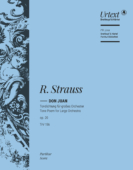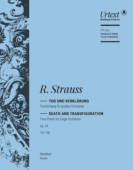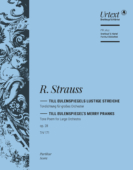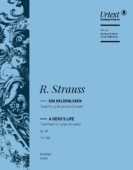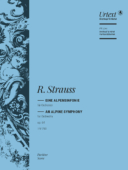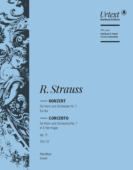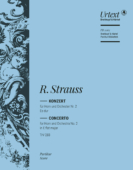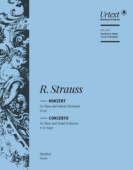Richard Strauss
Die großen Tondichtungen & Solokonzerte
Richard Strauss gilt als einer der bedeutendsten Symphoniker der Spätromantik, der vor allem das Genre der „symphonischen Dichtung“ mit neuartiger Harmonik und meisterhafter Orchestrierung zur Perfektion geführt hat. Der Name der Gattung stammt von Franz Liszt, Strauss selbst bevorzugte den Begriff „Tondichtung“ für seine programmatischen Kompositionen.
Es gelang Strauss in seiner Programmmusik auf überzeugende Weise, das Klangspektrum eines sinfonischen Orchesters mit einer erzählerischen Struktur zu verbinden. Er ließ sich für seine in einer Zeitspanne von knapp 30 Jahren entstandenen großen Tondichtungen von Mythen und Legenden inspirieren, legte ihnen literarische Werke Shakespeares, Cervantes und Nietzsches zugrunde. Entsprechend ihrer verschiedenen außermusikalischen Einflüsse stattete Strauss seine Werke mit ganz eigenen Klangcharakteren aus, welche die Kompositionen unabhängig von ihren Vorlagen werden ließ. In einem Brief an seinen Freund Romain Rolland erklärte Strauss dazu:
„Für mich ist das poetische Programm nichts weiter als der Form-bildende Anlass zum Ausdruck und zur rein musikalischen Entwicklung meiner Empfindungen – nicht, wie Sie glauben, nur eine musikalische Beschreibung gewisser Vorgänge des Lebens.“
Breitkopf & Härtel erweiterte kürzlich seine Orchesterbibliothek um sieben der insgesamt neun Tondichtungen Richard Strauss‘, angefangen bei den sehr unterschiedlichen Jugendwerken Don Juan und Tod und Verklärung über das vor allem wegen seiner Eröffnungsfanfare berühmt gewordene Also sprach Zarathustra bis zur monumentalen Alpensinfonie, mit der Strauss 1915 den Zyklus seiner Tondichtungen abschloss.
Das Oboenkonzert sowie die zwei Hornkonzerte ergänzen die hier von Breitkopf & Härtel präsentierte Auswahl der großen Tondichtungen in hochwertigen Urtext-Ausgaben.
Als unbestrittener Meister des Klanges bewies Strauss in seinen Kompositionen ein tiefes Verständnis für den Charakter einzelner Instrumente, was sich unter anderem in der hohen Wertschätzung zeigt, die seinen Solokonzerten entgegengebracht wird. Insbesondere seine zwei Konzerte für Horn und Orchester, welche Strauss jeweils zu Beginn und zum Ende seines kompositorischen Wirkens schuf, gehören zu den berühmtesten und meistgespielten Solokonzerten für dieses Instrument.
Ein weiteres beliebtes Solokonzert schrieb Strauss für Oboe: Eine ungeplante „Handgelenksübung“ für ihn, entstanden aufgrund einer Zufallsbegegnung, die Strauss meisterlich zu nutzen wusste. Fließende Melodien voller Heiterkeit und Anklänge an das Lebenswerk des großen Komponisten charakterisieren diese musikalische Retrospektive in drei Sätzen.









